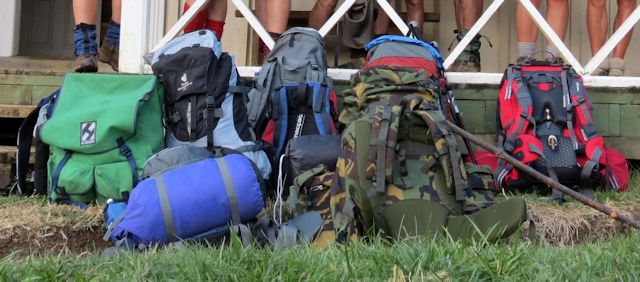
HOME | ABOUT US | CLUB DETAILS | ENVIRO CARE CODE | GEAR LIST | GUIDELINES | LINKS | RECIPES | TRAMPS
GEAR LIST
Heading into the New Zealand outdoors is not without its risks. Ensuring you are prepared with the right gear will make for a more pleasant and safer experience. Consult with your trip leader if you are unsure about what to take on your trip. Do not rely on others to bail you out if you get into trouble.
There are many outdoor and online stores where you can purchase everything you need. You may be able to pick up some second hand gear, or borrow items from friends, but make sure it is in good condition, fits well and is suitable for your purpose. Invest well even if it means paying a little more money.
Footwear
A good pair of worn in boots with good ankle stability and grip are the recommended footwear. Running shoes may be appropriate for some easy grade tramps. Bring a spare pair of clean footwear to leave in the car.
Clothing
The ideal way to dress for tramping is to wear layers that can be added to or removed to thermo-regulate for the changing conditions encountered. Chose fabrics such as polypropelene, merino, polarfleece, and quickdry materials for shorts and trousers. Raincoats and overtrousers should be waterproof and well sealed. Down has excellent insulating qualities but may be ineffective if it gets wet. DENIM JEANS are not suitable for heading out into the hills. Always have a dry set of clothing to change into when on overnight tramps (that stays dry).
For day tramps always bring................
* daypack and packcover or plastic bag to keep contents dry
* plenty of water in a well sealed vessel
* sunhat and sunscreen in most seasons and when in the open
* waterproof coat (+/- overtrousers)
* nourishing high energy food (and some extra)
* basic first aid items, including pain relief, anti-inflammatories, electrolytes, blister packs etc
* whistle
* emergency silver space blanket
* warm clothing including a woolley hat/beanie and gloves
* pocket knife
* toilet paper
Optional extras.......
*Gaiters/putties
*compass/navigational equipment that you know how to use
* insect repellent
* something dry to sit on
* large pack liner bag that can be used as emergency bivvy, fly or signalling device.
* headtorch and spare battery
* matches/lighter
* small quick dry towel. Togs.
* walking poles
* maps
* cord, paper and pencil, rubber to burn for signalling
For overnight trips.............
As above minus the daypack, but also:
* tramping pack and liner
* warm sleeping bag and liner
* Gas + cooker + lighter + billy
* plate, cup, utensils
* tent and sleeping pad if camping
* a spare dry set of clothing that stays dry for evenings
* spare clothes for walking if your first lot get wet or unbearably smelly
* toilet paper
* hand sanitiser and other toiletry items
* hut tickets/hut passes
* lightweight hut shoes, preferably something you could walk out in if necessary
*consider a metal water bottle which can double as a hot water bottle in cold conditions
* candle
Food suggestions
Breakfast
Your favourite cereal in ziplock bags
Milk powder
Instant porridge sachets
Tea/coffee/milo/hot chocolate
On the go
Muesli bars, nuts, scroggin, powdered cordial, chocolate, dried fruit
Lunch
Sandwiches, filled rolls, pita breads, wraps for the first day or two
Crackers, cheese, salami, spreads
Dinner
Any freeze-dried/dry foods...dehydrate your own or purchase pre made(eg: Backcountry Cuisine, Absolute Wilderness, Kaweka). Supplement with dry veges (eg Surprise veges) or fresh lighweight veges such as beans, snowpeas, mushrooms, small can tuna, salami
Other
Cup of soups, noodles
Aim for a total pack weight of no more than 12-15kg
Click here to link to some Handy Recipes.
© Whangarei Tramping Club
